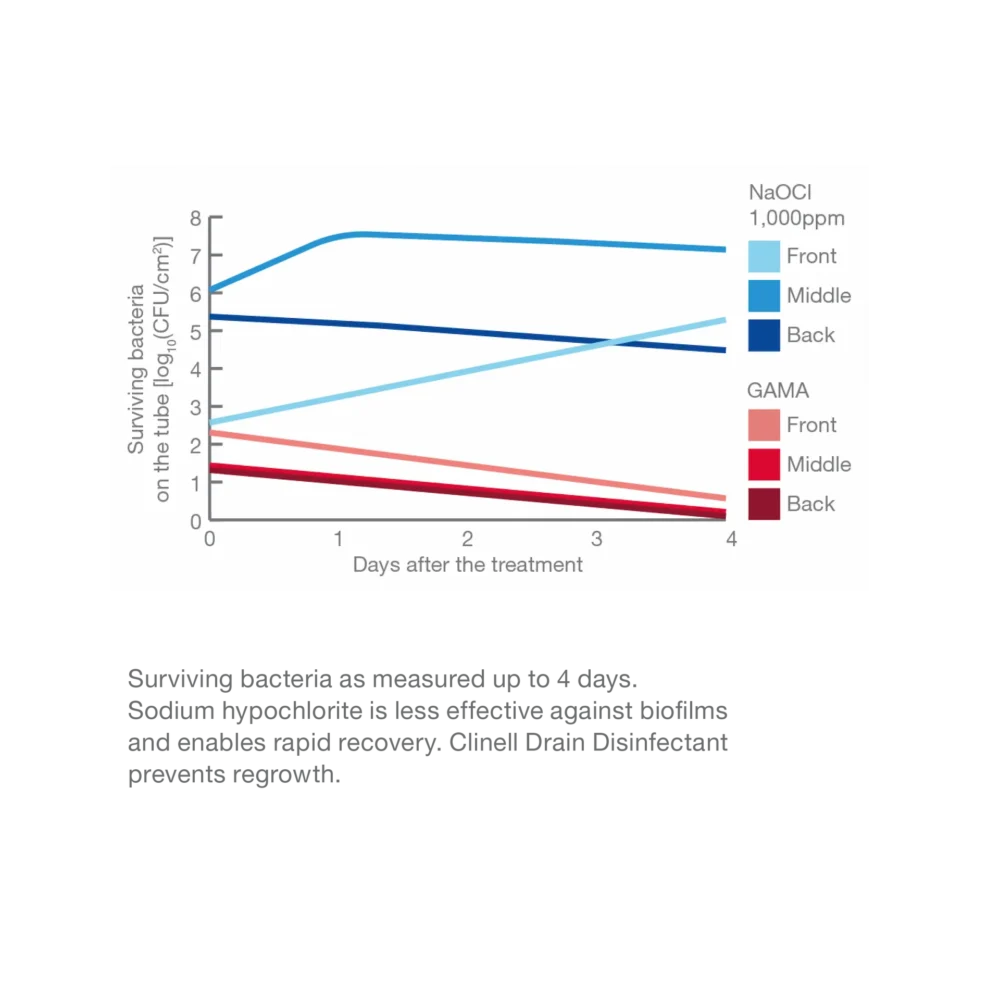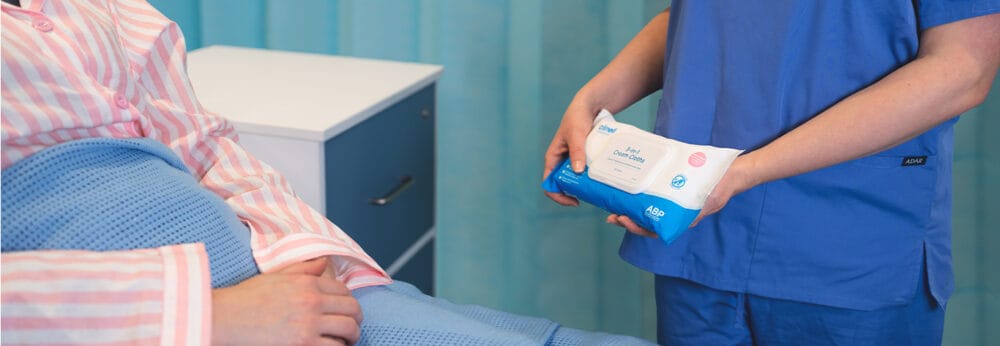Posted
7th April 2023
Research
In healthcare, with most sinks and drains being out of sight and out of mind, is it possible a source of infection has been missed? Believe it or not, there’s a city of potentially harmful microbes living in hospital drains. These cities are known as ‘biofilms’ and their residents are multi-species bacteria, which shelter inside protected from the lethal effects of passing disinfectants. Despite infection prevention and control protocols, these cities are increasingly linked to healthcare-associated infections (HAIs). Therefore, to wipe these communities out for good, it is critical the correct action is taken.
How do drain biofilms form?
Sinks and shower drains provide an ideal environment for micro-organisms to form biofilms. In many instances, it is everyday activities such as hand hygiene that supply the bacteria that colonise drainage systems. In addition, disposed fluids help provide the nutrients that support the growth of biofilms. In fact, drains in healthcare settings are frequently contaminated with multispecies microorganisms including Gram-negative and antibiotic-resistant bacteria.

Biofilms, sinks and the link to HAIs
Contaminated wet and dry surfaces contribute to the transmission of pathogens that cause HAIs. As for the surfaces we can’t see, laboratory experiments have shown that contamination from sinks and drains can potentially be transferred to the hands of healthcare workers and subsequently to patients.
Contamination of sinks with multidrug-resistant Pseudomonas aeuruginosa and Enterobacteriaceae was also shown to be as high as 50.9% (606/1191 sinks) from 73 ICU’s participating in the study. Furthermore, 459 sinks showed visible splashes with 30.5% being close to the bed (<2m) with no barrier around the sink making them susceptible to splashing and authors concluded there were frequent and multifactorial infection risks associated with contaminated sinks in ICU.
Traditional strategies aren’t working
Chlorine-based disinfectants are often used to treat drainage systems in the fight against biofilms. Free-floating microbes outside of the biofilm will be killed by traditional disinfectants, but the structure protecting the city limits chlorine’s killing effect. Unless effectively removed, the biofilm will regrow rapidly and continue to pose a threat.

Peracetic acid: oxidative technology to wipe out biofilms
The residents of drain-based biofilms are up there with the hardest-to-kill microorganisms. When looking at potential disinfectants that can be used to tackle them, we should consider:
Log reduction: The higher the better (Remember: log 1 provides 9% decontamination, log 2 = 99%, log 3 = 99.9%, etc)
Prevention of regrowth: The longer the better
Peracetic acid is proven to outperform chlorine-based (sodium hypochlorite) disinfectant in both criteria. As a strong oxidising agent, peracetic acid breaks down biofilms and kills >99.9999% of bacteria living inside. It achieves this by altering their chemical stability through oxidation, forcing cells to rupture.
At Cardiff University, UK, researchers have created a hyper-realistic drainage tap model impregnated with wet biofilms. They put Clinell Drain Disinfectant to the test and compared it to traditional disinfectants. Clinell Drain Disinfectant was found to have higher anti-biofilm activity than chlorine-based disinfectants (NaOCl 1000ppm).
Unlike chlorine, it eradicated biofilms throughout all sections of the drainage tap and prevented regrowth for at least 4 days.
To protect your healthcare facility’s drains from biofilms, register you interest in Clinell Drain Disinfectant via info@gamahealthcare.com.au.

References
- Lemarie C, Legeay C, Kouatchet A, et al. High prevalence of contamination of sink drains with carbapenemase-producing Enterobacteriaceae in 4 intensive care units apart from any epidemic context. Am J Infect Control. Feb 2020;48(2):230-232
- Kotay SM, Parikh HI, Barry K, et al. Nutrients influence the dynamics of Klebsiella pneumoniae carbapenemase producing enterobacterales in transplanted hospital sinks. Water Res. Jun 1 2020;176:115707
- Weingarten RA, Johnson RC, Conlan S, et al. Genomic analysis of hospital plumbing reveals diverse reservoir of bacterial plasmids conferring carbapenem resistance. MBio. 2018. doi:10.1128/mBio.02011-17 4.
- Berrouane YF, McNutt L, Buschelman BJ, et al. Outbreak of Severe Pseudomonas aeruginosa Infections Caused by a Contaminated Drain in a Whirlpool Bathtub. Clin Infect Dis. 2002. doi:10.1086/317501
- Aranega-Bou P, George RP, Verlander NQ, et al. Carbapenem-resistant Enterobacteriaceae dispersal from sinks is linked to drain position and drainage rates in a laboratory model system. J Hosp Infect. May 2019;102(1):63-69.
- Kotay S, Chai W, Guilford W, Barry K, Mathers AJ. Spread from the Sink to the Patient: In Situ Study Using Green Fluorescent Protein (GFP)-Expressing Escherichia coli To Model Bacterial Dispersion from Hand-Washing Sink-Trap Reservoirs. Appl Environ Microbiol. Apr 15 2017;83(8).
- Otter JA, Yezli S, French GL. The Role Played by Contaminated Surfaces in the Transmission of Nosocomial Pathogens. Infect Control Hosp Epidemiol. 2011;32(7):687-699. doi:10.1086/660363 2.
- Mitchell BG, Dancer SJ, Anderson M, Dehn E. Risk of organism acquisition from prior room occupants: A systematic review and meta-analysis. J Hosp Infect. 2015;91(3). doi:10.1016/j.jhin.2015.08.005
- Valentin, A. S., S. D. Santos, F. Goube, R. Gimenes, M. Decalonne, L. Mereghetti, C. Daniau, N. van der Mee-Marquet and S. I. group (2021). “A prospective multicentre surveillance study to investigate the risk associated with
SHARE THIS ARTICLE
Tags
Latest News
Advancing Continence Care with Clinell Contiplan: Expanded Indications, Pathways and Proven Outcomes
This World Continence Week, Clinell Contiplan 3-in-1 Cream Cloths introduce…
Celebrating 20 Years of GAMA Healthcare: Our Story
This month, GAMA Healthcare celebrates 20 years of helping prevent…
Norovirus and gastroenteritis outbreaks, the party ‘pooper’ you don’t want invited!
Recently, on 11 October 2024, NSW Health issued a health…
Clean Between to Reduce Healthcare-Associated Infections
Healthcare-associated infections (HAIs) are a significant concern for healthcare facilities…



